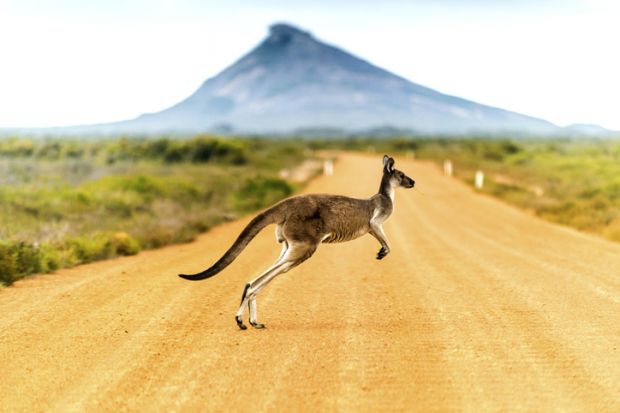Seven universities have joined forces to deliver “end-to-end” medical degrees in Australia’s brown interior, in a drive to overcome a dearth of doctors in the bush.
The Murray-Darling Medical Schools Network began training its first students in late February, operating on the premise that doctors educated in the country have better odds of staying there.
Australia has enforced regional quotas for its medical degrees since the early 2000s. Some students must have rural backgrounds and one-quarter must undertake at least a year of clinical training in the bush. But research suggests that this is not enough.
A 2017 Monash University study found that while 12 months’ rural immersion almost doubled the likelihood of students remaining in the regions, the probability more than doubled again if the country stint stretched past two years – particularly if it included experience in both hospital and general practice.
Charles Sturt and La Trobe universities, which have campuses across inland New South Wales (NSW) and Victoria, lobbied Canberra for years for permission to establish a joint rural medical school. They met stiff opposition from city-based universities and students worried that the proposal would dilute educational resources and increase competition for scarce medical internships.
In a compromise move, the two institutions are collaborating with Melbourne, Monash, Sydney, UNSW Sydney and Western Sydney universities, all of which have medical schools. The new network will run courses from Dubbo, Orange and Wagga Wagga in NSW and Churchill and Shepparton in Victoria, with students undertaking their placements in communities across the Murray-Darling region where much of Australia’s rural population lives.
“Once everybody’s up and running, there will be more than 600 students involved in this programme,” said Shane Bullock, acting director of Monash Rural Health.
In Shepparton, biomedical science graduates from La Trobe will be streamed into the University of Melbourne’s rural medical programme. Charles Sturt is offering an adapted version of the Western Sydney University (WSU) curriculum, with WSU providing guidance in the initial years.
Charles Sturt will arrange clinical placements in small country towns, with students returning to the same communities or nearby regional hubs for the duration of their degrees. “We are not trying to steal [clinical placements] from other universities,” said the inaugural dean of rural medicine, Lesley Forster. “We’re adding to the [overall] numbers.
“The more universities that give weight to rural medical education, the better for the rural sphere. If there are problems, they’re going to be similar problems and we can work together on solutions. The local doctors are so involved in the education programmes – they’re interested in a way you don’t see in Sydney.”
Regional “training hubs” attached to the medical schools also enable graduates to learn medical specialisations locally. Dr Bullock said this helped prevent newly minted doctors from being lured to the cities for postgraduate training and “tempted to stay”.
“Even though they might have a commitment to rural [work], they meet a life partner and we lose them,” he said.
Such initiatives reassured medical graduates that they would be able to find intellectual and social stimulation in the regions, Dr Bullock said. “‘Will I get challenging patients and clinical experiences? Will I be isolated from my peers? Will I miss out on opportunities to make connections with senior people?’ That’s their main concern, more than the opportunity to live the high life.”




